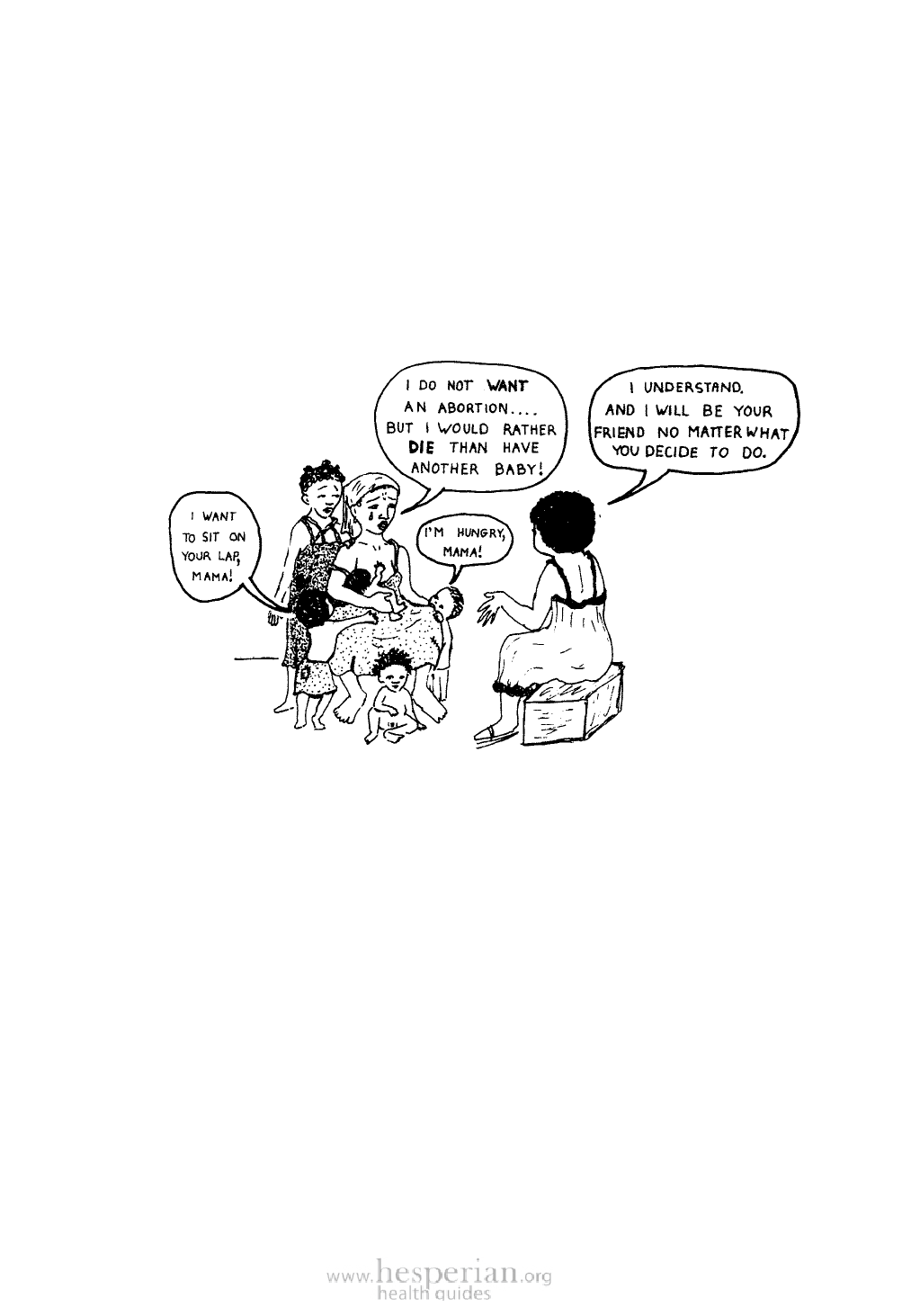
414 Where There Is No Doctor 2011
COMPLICATIONS FROM ABORTION
When a woman takes action to end a pregnancy before a baby is fully enough
formed to survive, this is called an abortion. (In this book we use the word ‘abortion’
only when the action is planned. The unplanned, natural loss of an unborn child we
call a ‘miscarriage’.)
Deciding whether or not to have an abortion can be difficult. In making a decision,
most women will benefit from warm, respectful advice and friendly support. When
abortions are done under sterile conditions in a hospital or clinic by a trained medical
worker, they are usually safe for the woman. Abortions are safest when done in early
pregnancy.
But when abortions are done at home, by untrained persons, or in unclean
conditions, they can be extremely dangerous. In places where abortions are illegal
or difficult to get, these ‘home’ abortions are often a major cause of death for women
between the ages of 12 and 50.
Methods for ending a pregnancy such as putting sticks or other hard objects into
the vagina or womb, squeezing the womb, or using modern drugs or plant medicines
can cause severe bleeding, infection, and death.
Danger signs following an abortion:
• fever
• pain in the belly
• heavy bleeding from the vagina
If you see these signs in a woman who may have been pregnant, they could be the
result of an abortion. But they could also be signs of miscarriage (p. 281), out-of-place
pregnancy (p. 280), or pelvic inflammatory disease (p. 243).